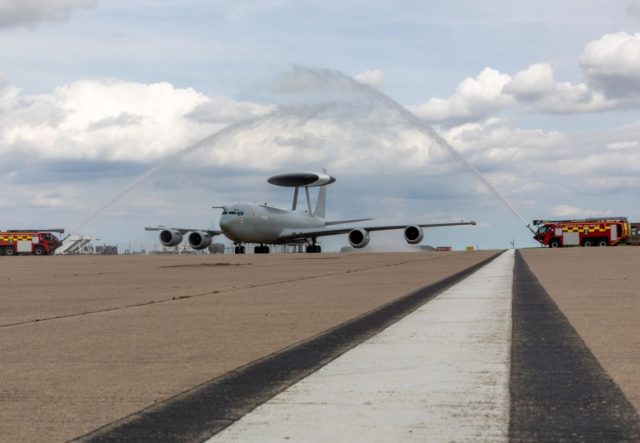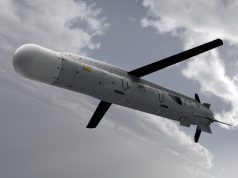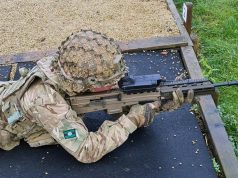A Royal Air Force Boeing E-3D Sentry airborne early warning aircraft (AWACS) has returned to its home base at RAF Waddington following its final mission on operation Shader, bringing to a close 30 years of operational service.
The E-3D Sentry aircraft flew its final operational sortie on the July 30 over Iraq as part of the counter-Daesh operation. The aircraft from 8 Squadron had been deployed to RAF Akrotiri in Cyprus and was the latest and last deployment since 2015.
The aircraft returned to RAF Waddington in Lincolnshire on August 4 and was greeted by Air Vice-Marshal Al Marshall, the Air Officer Commanding Number 1 Group and also Major General Thomas Kunkel United Stated Air Force Commanding Officer of the NATO Airborne Early Warning and Sea Control Force.
Describing the aircraft’s lengthy service, the Commander of the Intelligence, Surveillance, Targeting and Reconnaissance Force, Air Commodore Hay Commander said: “Sentry’s return from a hugely successful overseas deployment heralds a fitting end to over 30 years of continuous service in support of NATO, other coalition and national operations.”
The E-3D Sentry entered RAF service in 1991 as part of the RAF’s intelligence, surveillance, targeting and reconnaissance (ISTAR) fleet and was immediately deployed to support air operations during the first Gulf War. Since then the Sentry aircraft have been involved in UK operations including Iraq, Afghanistan, Libya, the broader Middle East and the Caribbean, together with a NATO role.
This recent deployment has seen operational sorties being flown on operation Shader, and also sorties to support operation Fortis, the deployment of HMS Queen Elizabeth and the Carrier Strike Group.
The E-3D Sentry will be retired later this year and will be replaced in 2023 by a fleet of three Boeing E-7 Wedgetails that will operate from RAF Lossiemouth in Scotland. During the period between retirement and the Wedgetail becoming operational, the ISTAR requirements will be covered by a combination of other aircraft and E-3s from NATO partners.
Late last year, the UK defense ministry offered the remaining aircraft in its Sentinel and Sentry fleets to interested buyers, who would be allowed to harvest the aircraft for reusable parts for potential resale.
It should be noted that NATO is also preparing for the withdrawal of the AWACS fleet from service, having launched a tender earlier this year for risk reduction and feasibility studies to analyze and develop the feasibility of concepts for a successor to the E-3.



























